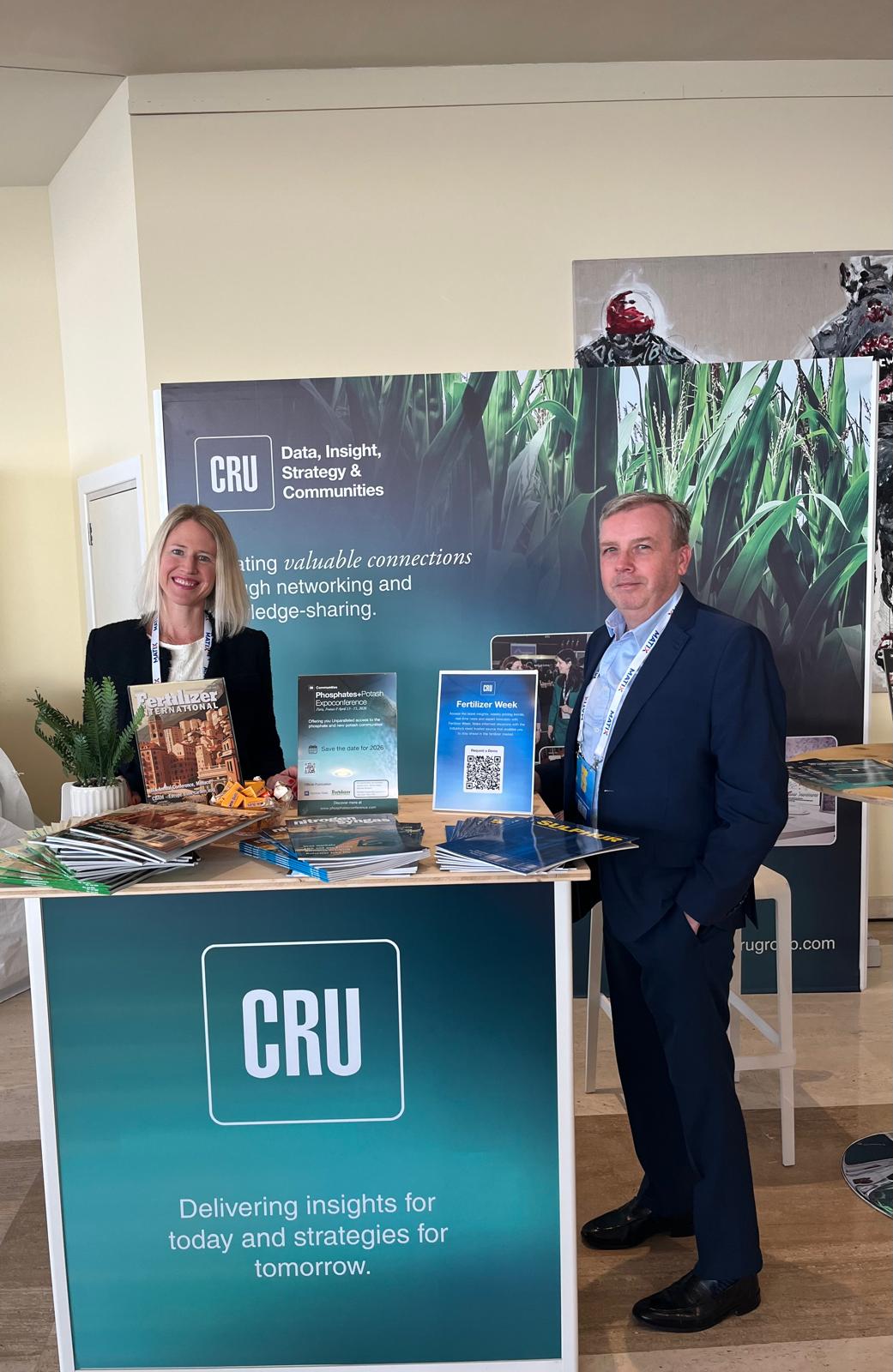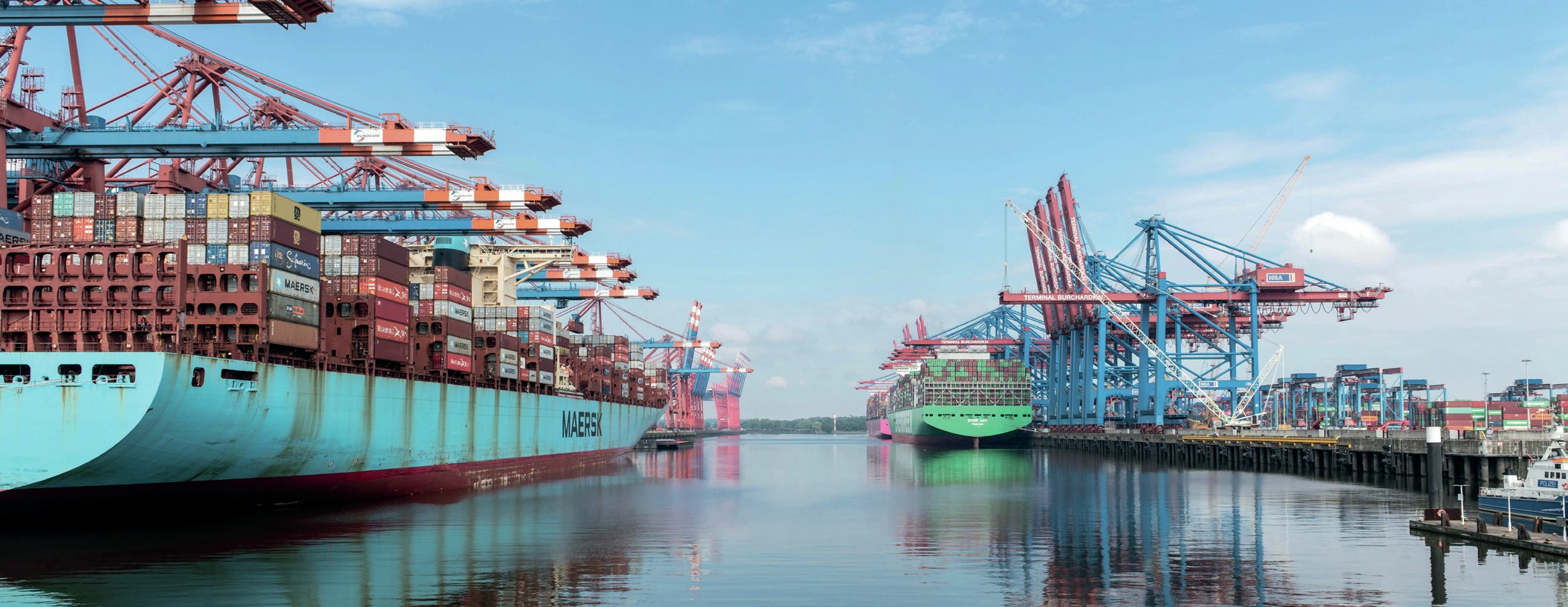Fertilizer International 515 Jul-Aug 2023

31 July 2023
Jansen – Canada’s potash megaproject
PROJECT REPORT
Jansen – Canada’s potash megaproject
BHP is committed to investing $5.7 billion to complete the first stage of the Jansen project and bring it into operation by the end of 2026. This under-construction Saskatchewan mine will then ramp up to produce more than four million tonnes of potash annually before the end of the decade.

BHP’s flagship Jansen potash mine project is located 140 kilometres east of Saskatoon, Saskatchewan Canada. It is the company’s most advanced under-development project.
BHP, the world’s largest miner, says Jansen has sufficient reserves to produce potash for a century, and could eventually grow to exceed 16 million tonnes of annual production capacity, a scale that would rival the size of its flagship Pilbara iron ore mine.
Greenlight for Jansen S1
BHP finally gave the go ahead for stage one of the Jansen potash project in August 2021. This final investment decision (FID) committed the Anglo-Australian mining giant to $5.7 billion of investment to bring the project into production.
Under stage one plans, the 4.35 million t/a capacity Jansen mine is now expected to produce its first potash ore towards the end of 2026, following a six-year construction phase. The mine will then take a further two years to ramp-up to full capacity (Figure 1).
BHP expects stage one of the Jansen mine (Jansen S1) to generate an internal rate of return (IRR) of 12-14 percent – equivalent to a payback period of around seven years – and operate at a healthy earnings (EBITDA) margin of around 70 percent.
“Jansen is located in the world’s best potash basin and is expected to operate for up to 100 years. Potash provides BHP with increased leverage to key global megatrends, including rising population, changing diets, decarbonisation and improving environmental stewardship,” BHP said in a statement at the time of the FID.
Speaking in August 2021, Mike Henry, BHP’s CEO, said Jansen would help the company grow its portfolio of large, low cost and expandable world class assets.
“This is an important milestone for BHP and an investment in a new commodity that we believe will create value for shareholders for generations,” Mr Henry said. “In addition to its merits as a standalone project, Jansen also brings with it a series of high returning growth options in an attractive investment jurisdiction.”
He added: “Jansen is designed with a focus on sustainability, including being designed for low greenhouse gas emissions and low water consumption.”
The $5.7 billion investment in Jansen S1 covers the design, engineering and construction of a complete underground potash mine and all of its associated surface infrastructure. This includes a processing plant, a product storage building, and a continuous automated rail loading system. Jansen’s potash output will be shipped to export markets through Westshore in Delta, British Columbia, with the project’s new funding also covering the necessary port infrastructure.
In its mid-2022 annual operational review BHP said: “The Jansen shaft project was completed in the June 2022 quarter. Jansen Stage 1 is tracking to plan, with activities progressing at the port and at the Jansen site. We are working to bring forward Jansen Stage 1 first production into 2026 and are assessing options to accelerate Jansen Stage 2.”

Jansen S1 is timed to arrive at an opportune moment for new potash supply. “We anticipate that demand growth will progressively absorb the excess capacity currently present in the industry, with opportunity for new supply expected by the late 2020s or early 2030s. That is broadly aligned with the expected timing of first production from Jansen,” BHP said.
BHP predicts that Jansen will operate competitively, being positioned in the first quartile of the industry’s cost curve. It expects long-term potash prices to be set by Canadian solution mines. These tend to have higher operating and sustaining capital costs than conventional mines like Jansen, as well as consuming more energy and water.
The Jansen S1 mine will convert approximately 20 percent of BHP’s 5.23 billion tonnes of measured and indicated resources in Canada into potash ore reserves. The mine’s earnings potential is based on average potash price assumptions for the decade 2027-2037 supplied by CRU ($341/t) and Argus ($292/t). Sustaining capital for Jansen Stage 1 is expected to be approximately $15/t, plus or minus 20 percent for any given year.
Mine shaft completion and project progress
In a major milestone, BHP significantly de-risked the project by completing the excavation and lining of Jansen’s two 1,000-metre-deep shafts in the second-quarter of 2022.
Commenting on the shafts’ completion, Simon Thomas, BHP’s president, potash, said: “The team’s safety record and performance since January 2020 has exceeded our plan. Our approach to safety, work planning discipline and continuous improvement – along with our collaborative and integrated team approach – really shone in the final stages of this project.”
Sinking these large diameter (7.3 metre) shafts was one of the most technically challenging and riskiest parts of the project. Jansen pioneered mechanised shaft sinking and its shaft walls were frozen to a depth of 800 metres. Freezing ensured ground stability and prevented water ingress during excavation. A primary and final liner were then installed to create a waterproof seal that protects the shafts from underground aquifers.
The need to fit out only one of the two shafts for Jansen S1 has allowed BHP to reduce the project’s upfront capital costs. Ultimately, the availability of two shafts will enable large-scale capacity expansions in three subsequent project stages (S2, S3 and S4). These would each add an extra four million tonnes of capacity sequentially 1 , as follows:
- Jansen S1 (current stage): >4 million tonnes of annual potash production capacity, capital intensity of $1,200/t and an IRR of 12-14 percent with a payback of seven years.
- Jansen S2: >8 million tonnes of annual potash production capacity, capital intensity of $800-900/t and an IRR of 18-20 percent with a payback of around four years.
- Jansen S3: >12 million tonnes of annual potash production capacity, capital intensity of $800-950/t and an IRR of 20-23 percent with a payback of 3-4 years.
- Jansen S4: >16 million tonnes of annual potash production capacity, capital intensity of $800-950/t and an IRR of 20-23 percent with a payback of 3-4 years.
These three expansions provide BHP with the option to ramp-up Jansen’s annual potash production to more than 16 million tonnes – although this would require regulatory approval, the availability of capital and a business case based on sufficient global demand growth. Production on this scale would be equivalent to almost 25 percent of current global demand. BHP does, however, expect annual potash demand to increase to 105 million tonnes by 2040, according to mining.com.
JANSEN PROJECT: KEY CONTRACTORS, SUPPLIERS & CONSULTANTS
- DMC Mining Services: development of two new mine shafts
- SNC-Lavalin: feasibility study and engineering, procurement and construction management (EPCM) services for Jansen S1
- Sandvik: electric MF460 borer miners and battery electric vehicles (BEVs)
- Cementation Americas: post-liner excavation, steel and equipping
- Wicehtowak Frontec Services: a joint venture partnership between ATCO Frontec and George Gordon Developments for camp support services at BHP’s Jansen Discovery Lodge
- 2Nations Bird: a multi-company partnership for works on Jansen S1 and site services
- Constructors: a multi-company subcontractor for the site services agreement.
BHP announced in July 2022 that it was accelerating Jansen’s construction timetable. This was reported to be in response to global fertilizer supply disruption brought about by market factors such as potash export sanctions on Belarus (Fertilizer International 512, p50) and the effects of high gas prices on fertilizer production costs (Fertilizer International 513, p13). Consequently, instead of entering production in 2027, as originally planned, BHP has brought forward first production from Jansen S1 to 2026 instead.
Stage 2 brought forward
In February, BHP also announced it was bringing forward its Stage 2 studies for Jansen. The company’s July-December 2022 results, released on 21st February, confirmed that:
- Jansen Stage 1 project execution was 16 percent complete, running to plan and budget, and targeting first production by the end of calendar year 2026 with 81 percent of engineering complete and 85 percent of procurement orders placed.
- The Stage 2 feasibility study is underway and is now expected to be completed in the financial year 2024.
If approved, Jansen S2 would be timed to come onstream around 2029, being choreographed to coincide with the end of the ramp-up of Jansen S1. BHP expects the proposed S2 expansion project to be delivered at a lower cost than the current S1 project phase. Although the expansion studies have yet to be completed, the company expects S2 to have a capital intensity of $800-900/t versus 1,200/t for S1 1 .
BHP hopes to make the final investment decision for Jansen S2 in 2024. The company has confirmed that all the necessary permits for this second stage expansion are in place and that sufficient port capacity is also available.
Insights from BHP’s top team
In a rare interview with the company’s executive team, David Lamont, BHP’s chief financial officer, talked about the Jansen project in depth with Joel Jackson at last year’s BMO Global Farm to Market Conference 2 . Their conversation was revealing.
Lamont had a message for market observers who had been following the Jansen project as far back as 2008.
“It’s important to note that it is not like we have suddenly fallen in love with potash. We have been in and around it for a while. We are very excited that we now have our project sanctioned and are looking to get into the market.”
With BHP offloading its oil and gas assets in a merger with Woodside Petroleum, Lamont linked the company’s future growth prospects to potash mining, and the staged development and expansion of the Jansen project – a characteristic he called ‘optionality’.
“We have always said, ‘Well, the growth was potash’, but perhaps we had not been as explicit to the market around how we saw that over the decades to come. As a result of the Ukraine-Russia situation… [and] whether or not that would create a better window for potentially more… potash to come to market… we have said that we are looking to study Stage 2 and be prepared.
“We are always looking for future optionality. We have Stage 1 and Stage 2, but equally we are not coming into the potash market just to be there for the short term. This is an investment that we see will have a century-long payback. Great resources are hard to find and they only get better over time – and all of that is there [with Jansen].”
Adding potash to its portfolio should strengthen BHP’s presence in new markets too.
“Our traditional markets have been more China and India. What potash enables us to do is to look into the US and Brazil as two markets that we do not have as big a presence in. The MOUs that we have in place for over 100 percent of Stage 1’s production are diversified. We have them in China, in India, in Brazil and in the US.”
BHP has access to sufficient capital expenditure to enable the expansion of the Jansen project over the medium-term, suggested Lamont.
“Historically, BHP has spent $6-6.5 billion on total capex. Over the foreseeable mid-term, we would see that stepping up to about $10 billion – and the Jansen projects have been built into that.”
In Lamont’s view, being one of the top three potash producers globally was not necessarily what BHP was aiming for.
“We are not sitting here saying that we have to be one, two or three [in the potash market]. What we are saying is that we want to be a meaningful player in any market that we are in. More importantly, we look at the underlying [potash] resource that we have – which sees us low on the cost curve and has scale, optionality and longevity.”
The earnings (EBITDA) potential of Jansen remained strong, argued Lamont, even at a fraction of the record potash pricing seen at the time of the interview in May 2022. This was also true, in his view, whether the Jansen project expanded to eight million tonnes or to its full annual production capacity of 16 million tonnes plus.
“If we were to develop [Jansen] based on current pricing and halve that, and we were at 16-17 million tonnes, we would be delivering between $4-5 billion of EBITDA. [Even] if you say it’s eight million tonnes, I will take $2 billion plus of EBITDA any day. That is meaningful.

“We have [expansion] ambitions, yes, but we will do that only if we see that the market conditions are appropriate for us to execute. It is not about, ‘I must be one, two or three in the [potash] market’. It is about how we add shareholder value by optimising the resources that we have.”
BHP’s reputation as an extremely reliable commodity producer was crucial to both its customers and shareholders, said Lamont.
“We want to be known as the most reliable [potash] producer in the market. If we are able to do that at the scale … and at the position we have on the cost curve, we can ensure that we are doing the right thing … for the customers that we ultimately will be supplying. By doing that, we will also maximise shareholder value and return”.
Valuably, BHP is bringing its vast mining company experience into the fertilizer industry as it moves into the potash market, summed up Lamont.
“We see a lot of similarities between what we do in our bulk mining operations and what we will be able to bring to the potash industry and to Jansen. We are excited by the possibility of what we can do, and we are excited at being able to leverage some of the skills and capabilities that we have. We think that the market will ultimately enjoy that reliability that we have and are keen to continue to execute [the project].”
Sandvik wins major Jansen order
Sandvik Mining and Rock Solutions has secured a major order for 10 battery-electric vehicles (BEVs) from BHP, along with one electric tethered loader, for the first phase of the Jansen potash project (Fertilizer International 513, p38). These BEV loaders and other equipment are scheduled to be delivered between 2023 and 2025.
“Jansen will have the lowest carbon emissions per tonne of product produced compared to any potash mine operating today in Saskatchewan.
The order for battery-electric loaders, placed last June, reflects BHP’s focus on both sustainability and advanced technology for the Jansen mine. Sandvik’s BEV loaders are designed for minimal underground mining infrastructure – as they eliminate the need for overhead cranes and other heavy handling equipment.
“Electric mining equipment is essential to meeting our goals to reduce emissions, improve productivity and most importantly protect the health of our employees underground. Jansen will have the lowest carbon emissions per tonne of product produced compared to any potash mine operating today in Saskatchewan,” said Simon Thomas, BHP’s president, potash.
“We are excited to partner with BHP and proud to contribute to the sustainability and productivity of this project. Sandvik electric loaders have been designed to best utilise innovative technology of its battery pack and electric driveline, and maximise the capabilities of our battery technology,” said Alex Willows, business line manager for Sandvik Canada.
This latest order follows a SEK 2 billion ($216 million) mining systems contract for the Jansen project won by Sandvik in February 2022. This commits Sandvik to supplying a fleet of electric, cable-connected MF460 borer miners between the third-quarter of 2023 and 2026. These borers have been especially developed for the project following several years of Sandvik-BHP collaboration.
References






